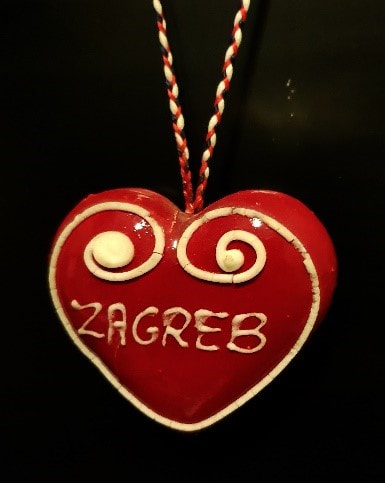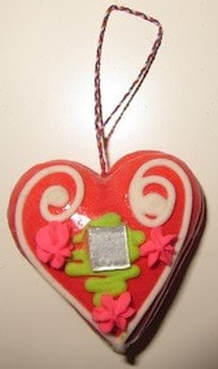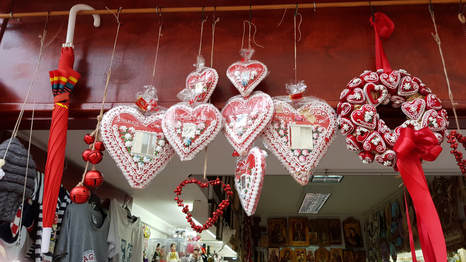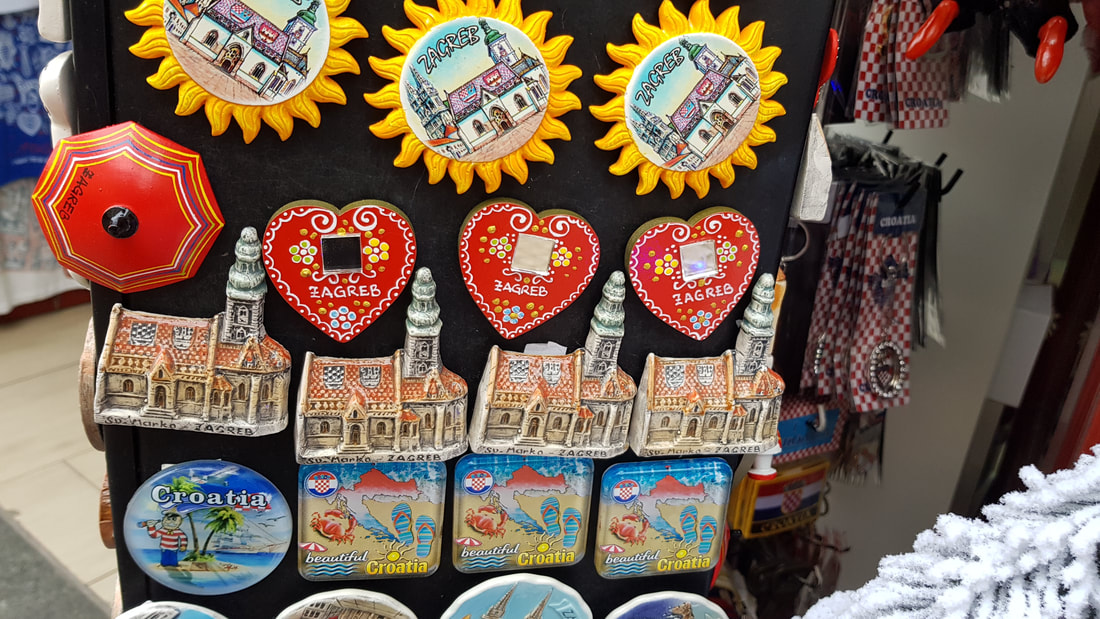Learning Croatian through experiences #001Licitarska srca
Before we begin ... 'Licitarska srca' is plural. What is the singular'
I have two friends (bračni par) from Perth who were in Croatia at the same time that I was. As it happens, they are also learning Croatian and are students of the SpeakCro Online Learning School.
Mateja was a wonderful host to her students (us) while we were in Zagreb, and gave us whatever time she could. But a teacher is a teacher. On several occasions when she had to work, she sent us off into the city centre – each time with a different challenge These challenges were designed to make us more comfortable with conversational Croatian. And they were indeed challenges, but they provided a motivation, and were possibly my most interesting and successful learning experience.
One of these challenges was to find out, speaking only in Croatian, as much as we could about the significance and origin of licitarska srca.
Of course you have seen licitarsko srca, the heart-shaped ornaments which have become the symbol of the wonderful city of Zagreb, capital of Croatia.
A licitarsko srce. Always heart-shaped and red, they come in quite a variety of decorations.
Licitarsko srce is a singular, neuter noun, so the plural is licitarska srca. I had long conversations with the owners of two souvenir shops near Trg Bana Josipa Jelačića and found out the following fascinating stuff. I am only repeating the stories as I understood them with my limited Croatian language skills, so cannot guarantee their accuracy. Perhaps you can correct me, or add to my story …. Well, it seems that davno, davno, in and around Zagreb, heart-shaped biscuits were traditional fare at Christmas and at Easter, and especially at proštenja – celebrations of the various saint's days. Their size ranged from small biscuits about 3 or 4 cm diameter to much larger 25 cm cakes. This tradition is dying out, but still survives – especially in the villages on the outskirts of Zagreb.
Meanwhile, there developed a rather unusual and intriguing use. Licitarska lica were produced with a mirror embedded into the biscuit material.
The story goes that if a young man (or an older one, I suppose) was sure that he wanted a particular young lady to be his wife, he would give her a licitarsko srce that has a mirror. And he would ask her to look into the mirror and see if she could see herself in his heart. If her answer was “Da, mogu!” the world turned to honey and they lived happily ever after. Of course, “Ne mogu” was the dreaded reply. Some traditions fade away. Now licitarska srca are merely souvenirs to help travellers recall their visit to Zagreb. They are made of a biscuit-like material which is not edible.
On a wander past the souvenir shops between the Zagreb cathedral and the Dolac ope-air market, you will find all sorts of exotic licitarska srca on display.
What a fascinating story! I am sure that there are more accurate, and more full, versions in the minds of older zagrepčani (purgeri). Or in sources that can be found by Google. Comments or corrections invited .....
Post script …. According to my Croatian-English dictionary (editor Bujas), licitar is a gingerbread man, licitarka is a gingerbread woman, and licitarsko srce is a gingerbread heart. That suggests that licitarska srca are made of gingerbread. But that seems odd because the word for ginger is đumbir. Mateja has commented: I would say that a licitarsko srce was something like gingerbread, but not really gingerbread as there is no ginger in it, definitely not originally. Actually some cookies are called medenjaci, and they are more like gingerbread. The licitarska srca nowadays are not edible, but I'm not sure whether originally the dough for licitarska srca and for medenjaci was the same or not... In the times when they started making them, nobody had probably even heared of ginger. (We hadn't heared of ginger until basically few years ago.)
Well, given Mateja’s reference to medenjaci, I was reminded that Bujas gave medičar as an alternative word for licitar, so I guess that a medičar sold medenjaci.
And because of this, I now realise that Bujas’s translation of licitar as a gingerbread man means a person who sells gingerbread. Isn’t language interesting? I had interpreted gingerbread man to mean (as in our English tradition) gingerbread biscuits made in the shape of a man. And the term medenjak (singular of medenjaci) presumably means that these cookies are made with honey? Please don’t take this story as a factual historical account. It is merely the uncertain level of understanding that I had reached throught my conversations in pidgin Croatian. A basis for discussion …. By the way, as an exercise in learning Croatian, in the sense of becoming more comfortable conversing in Croatian, Mateja’s challenge worked brilliantly.
Getting around
You can browse or search this website in the following ways:
AHA! Learning Croatian with Bob
Correspondence: [email protected]
1 Comment
|



